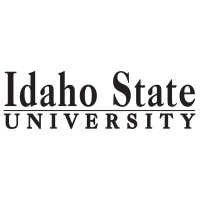We collected aquatic insects from the an elk carcass (May 2011) for isotope analysis. We also collected aquatic insects at sites without a carcass in March 2011 for reference samples (no-carcass treatment). Similarly to gut-content analysis, we were restricted to compare the isotope values of aquatic insects on an elk carcass in May 2011 and aquatic insects at sites without a carcass in March 2011 because of logistical constraints. Additionally, we collected potential food sources of aquatic insects for isotope analysis including elk muscle tissue (Mar. 2011), biofilm (Dec. 2010 – May 2011), seston (i.e. transported organic matter, Feb. – Mar. 2011), and leaves (Dec. 2010). All samples were frozen until analysis.
In the laboratory, samples were dried in a drying oven at 60 °C, except samples of elk muscle tissue were freeze-dried. After drying, we homogenized the samples with a mortar and pestle or grinding mill. All samples were analyzed with the Elemental Combustion System 4010 (Costech Analytical Technologies Inc., Santa Clarita, CA, USA) interfaced to a Delta V Advantage Mass Spectrometer through the ConFlo IV System (Thermo Scientific, Waltham, IL, USA). All samples were analyzed for isotope ratios of δ13 carbon (δ13C) and δ15 nitrogen (δ15N). Isotope ratios of δ13C are reported as per mil (‰) values relative to the VPDB scale; whereas δ15N values are reported as per mil (‰) values relative to air N2. Additionally, all samples were analyzed for elemental composition of percent nitrogen and carbon. All isotope and elemental analyses were conducted at the Center for Archaeology, Materials and Applied Spectroscopy (CAMAS) Laboratory at Idaho State University, Pocatello, ID.
Samples were analyzed using ECS 4010 (Elemental Combustion System 4010) interfaced to a Delta V advantage mass spectrometer through the ConFlo IV system. The elemental analysis is done by an evolutionary "flash combustion/chromatographic separation techniques". The furnace temperature was kept at 1000oC; while the reduction oven was 650oC. The gases generated from the combustion of the samples are carried in a helium stream into a GC column held at 60oC. The gases then get separated before being diluted in the ConFlo IV and passed to the mass spectrometer for analysis. Isotope ratios of δ13C are reported as ‰ values relative to the VPDB scale; whereas δ15N values are reported as ‰ values relative to air-N2. Three in-house standards (ISU Peptone, Costech Acetanilide and DORM-3) which are directly calibrated against international standards (IAEA-N-1, IAEA-N-2, USGS-25, USGS-40, USGS-41, USGS-24, IAEA-600) were used to create a two-point calibration curve to correct the raw data. ISU Peptone and Costech Acetanilide are used to set up a two-point calibration line. A third standard (DORM-3) is used to monitor the accuracy of the data.
Data and Resources
| Field | Value |
|---|---|
| Modified | 2019-06-11 |
| Release Date | 2019-06-11 |
| Publisher | |
| Identifier | a006730a-688b-4c64-9ffe-a69287982233 |
| NKN Identifier | 830BF3C6-4346-4433-997C-1CF173E01CDF |
| License | |
| Public Access Level | Public |


![[Open Data]](https://assets.okfn.org/images/ok_buttons/od_80x15_blue.png)